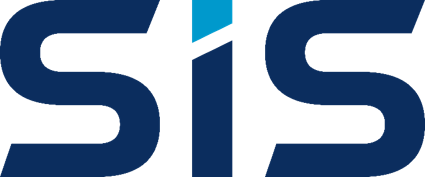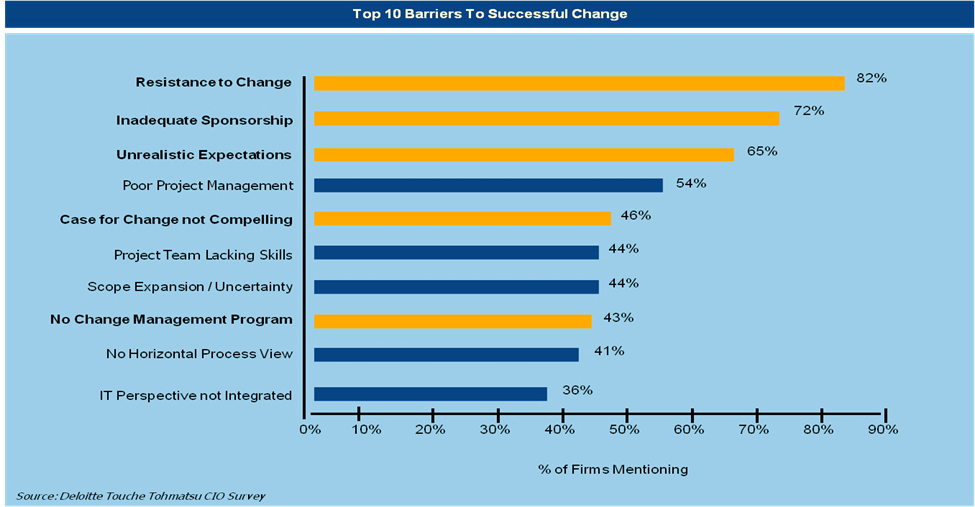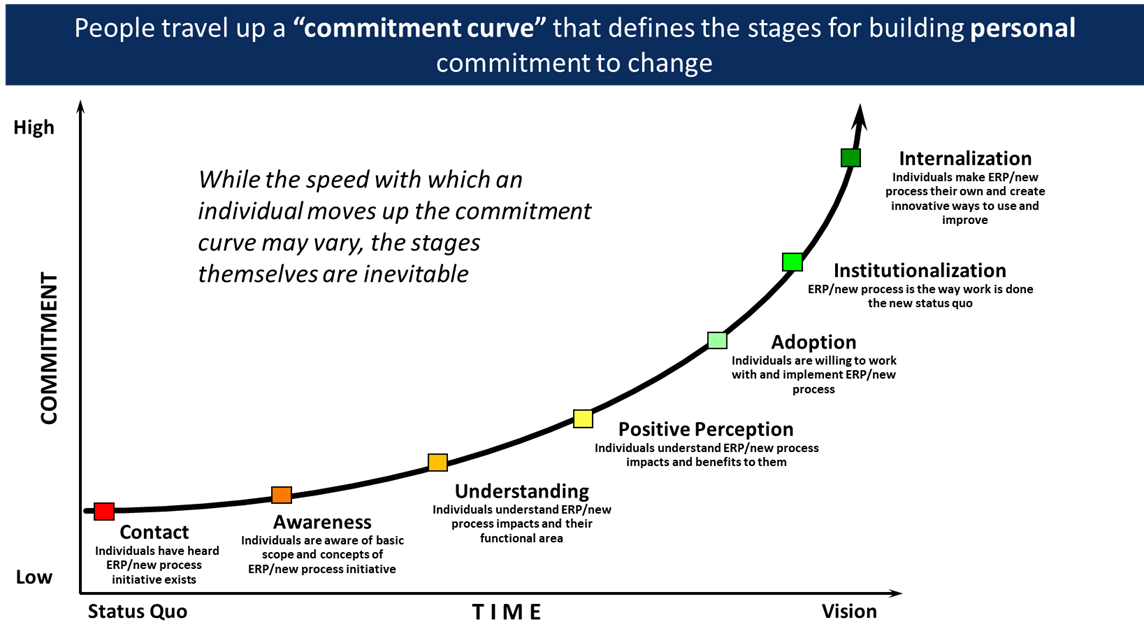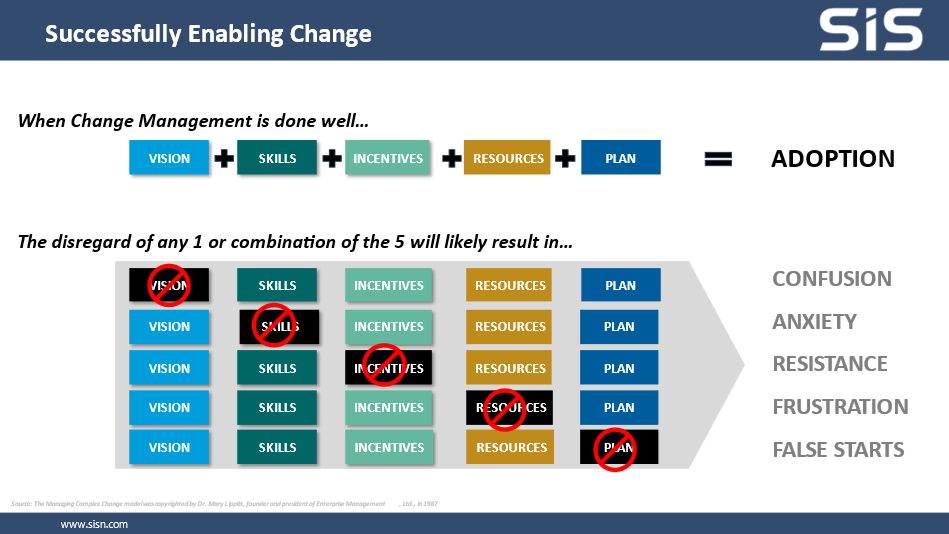Q&A Blog Categories
Supply Chain
Change Management
Business Intelligence
Project Cost Management
Managed Services
Enterprise Asset Management
ERP Implementation Projects
Construction Finance
ERP Project Managers
Construction ERP Pain Points
Women in Construction and Why it Matters – to Everyone
On-Premise, and Other Construction ERP Insights
Real Cost of Procession Union Payroll Manually
AI in construction
ERP User Adoption
Construction ERP Visibility
Changes in Construction Technology
Katrina Kostes | SIS Senior Director, Strategic Relationships
![]() Interview by: Sarah D. Morgan, SIS Senior Marketing Manager
Interview by: Sarah D. Morgan, SIS Senior Marketing Manager

According to Harvard Business Review, one in two Organizational Change Management (OCM) projects fail because companies focus too much on soft skills to motivate the change. Harvard’s research shows that hard skills, what we call “developing and implementing structured changed” enable an organization for success.
In this in-depth Q&A, Katrina Kostes, SIS Director, Management Consulting, gives us an explainer about both the hard and soft skills of OCM and how SIS has embedded Organizational Change Management into our ERP implementation methodology.
Ours is a learning journey of success and this article is a detailed OCM explainer of the people side of Organization Change Management with rich examples of the psychological impact change presents.
Q: Katrina, before we get started with our Organizational Change Management (OCM) explainer, how did you get into Management Consulting and specifically into OCM?
A: Actually, I got into Management Consulting (MC) to get over my irrational fear of flying. I took a position in this field because I knew it would require me to travel. Once I got into it, I found that it aligned with my basic desire to fix, rebuild, and build. I was the kid who took apart the TV, radio, and toaster to see how they worked! From there, it was a natural progression into change management. At first, I understood the “what” “where” and “when” of change and their relationship to a project; then I noticed the success of different environments and circumstances for the team members varied from project to project; I needed to understand why that was. Why were some projects successful and some not? At that point I knew OCM would become one of my core competencies. I came to appreciate that the real key to success was in the “who” and the “how” you enable it to happen for the individual. That was 35 years ago.
Q: First things first, what is OCM?
A: An easy way to understand OCM is to think of a project sort of as a road trip. First, you have a project plan and that’s your GPS – your roadmap and your step-by-step directions to get you to your destination. OCM is a parallel plan that focuses on the journey itself and experiences that you encounter along the way. If you have a good OCM plan, you’re going to make that journey informative. It’s going to be stress free. It’s going to be enjoyable and most of all successful. That is the learning journey of OCM.
Q: When we talk about OCM, according to Harvard’s 1 out of 2 implementation fail statistics, how do you predict the problems you know are heading straight for an ERP implementation project?
A: With every project, there are common risks and issues that can cause it to go “sideways” and potentially fail. These are predictable and should always be anticipated. The degree to which they impact a particular project is the variant. It is the understanding and making our client aware of impacts to their specific situation that’s enables us to work together and create the right mitigation to avert or minimize affect.
Q: What are some OCM Team Objectives you can share?
A: It goes back to listening regardless of how common or how many times you think you have seen a similar situation or scenario. The secret sauce is your understanding; you must be able to listen with empathy, not just hear words they’re saying. Look at their situations from their perspective and you will realize that every story is going to be unique. So, the objectives I set for OCM Teams are to:
- Prepare and educate leadership in the importance of their role in achieving success.
- Effectively communicate throughout the organization in a well-defined, and planned distribution of relevant information and process against goals.
- Prepare users to understand and confidently use the systems being deployed.
- Minimize operational disruptions during transition.
- Collaborate to enhance project team effectiveness.
Q: How does company culture play into OCM?
A: A company doesn’t just have one culture throughout its organization. There may indeed be a corporate culture defined and held as an overall desired behavioral conduct. But most often than not, a company will have multiple cultures and/or variations as you go deeper into the organization.
Every group within a company is going to have a certain uniqueness in culture that will influence how they see things and react. If you only look at it from the perspective of what is the publicized “company culture”, you won’t really understand the true impact of change. Listening and seeing things through the view and lens of individual groups will enable you to customize an OCM Plan that will facilitate their adoption.
Q: When it comes to OCM, you talk about the learning journey as the opportunities that will be provided for change ambassadors at various phases. What are the benefits of a learning journey?
A: Think of it this way, as Change Ambassadors they’re taking the team members on a journey. They’re driving the train. To prepare them, we take them on a similar journey – we’re providing them with the awareness and the knowledge they’re going to need to successfully prepare and enable their team to embrace change. However, it is important to manage the journey for maximum results. The Change Ambassadors should have a progressive and mounting learning experience. I’ve heard repeatedly “you can’t communicate too much, and you can never provide too much information.” I respectfully beg to differ – you absolutely can! And the result is often confusion, misunderstanding, and misdirection.
If you’re not communicating the information in a logical and structured manner that can be easily absorbed, you’re not going to be successful. Always ask, are you giving them too much, are they grasping the message? These questions need to be considered every step of the way if you hope to achieve:
- Incremental, measurable learnings
- Quicker realization and mitigation of risks
- Ability to monitor and enhance change readiness
- Communication of specific impact and value to end users
- Ongoing sustainable process with tools to leverage as new team members are onboarded
Q: What are the top barriers to a successful OCM initiative?
A: This Deloitte and Touché diagram shows the 10 barriers with the top being resistance to change. You see that out of these ten barriers, the ones that are highlighted in yellow are specific to OCM. Three of the top 10 are OCM related not project related, so you need to understand the importance of running an OCM program for any implementation. Regardless of what the implementation is, you’re going to have resistance to the change. You’re going to have issues with leadership. You’re going to have unrealistic expectations. All those things are things that can be proactively addressed.
Q: What processes do you put in place to overcome the resistance to change?
A: It’s all about communication. Devising campaigns of communication to build awareness and facilitate adoption. However, before you start launching communication campaigns, you must be informed by a level of understanding. First recognize what’s driving the resistance to change. This could be a lot of factors: fear of losing one’s job, thinking my way always worked – why should I change, too much change happening – change fatigue, fear of learning new things; to name just a few.
Once you have an understanding and awareness of what the drivers for the resistance are (yes, there will be many drivers for different groups and different people) the campaigns required to desensitize those factors will be more targeted and therefore, more effective.
Q: What supporting data is available when change enablement is done well?
A: There are indications at both the project and the individual level. On the project level when change is done well, you’re looking at the realization of your targeted goals, have you achieved the benefits anticipated, has the success criteria identified at the beginning of the project been met?
Individual/team member levels your gauge to measure whether enablement is successful is seeing people’s receptivity, participation, and steady movement up the commitment curve – listening for the “noise” to fade!
Q: We talk about hard skills and soft skills. What are the material impacts from change on the team members that will affect people?
A: Change typically evokes emotional rather than logical responses from individual team members; those responses can range in level, anywhere from mild to extreme.
Material impacts resulting from changes occurring within an organization are going to affect individual team members in different ways. You can’t change the things that are going to impact them. You can influence how they experience them and how prepared they are to embrace and adopt.
Here are some examples of material impacts:
- Head count changes (up/down)
- Reorganization of Business Units and job roles/responsibilities
- Significant changes to how people do their work
- New required skill set
- Training strategy, plan, and tools
- Availability/operational coverage to learn
Q: How do you successfully enable change?
A: Think of a recipe with 5 essential ingredients. When you include all the essential ingredients your dish comes out delicious! If you leave out any one or more key ingredients your dish will not come out as planned. The same is true when enabling change, there are 5 key components, and the removal of any one or more of these components will significantly impact your ability to succeed.
You enable change by going through the process we’ve discussed. Understand the big picture, what the change is, what the overall impact is going to be, understand who is going to be impacted and how, understand what influences already exist within the organization (positive and negative). Then create a plan targeted to communicate, familiarize, outline the benefits (the wifm – what’s in it for me), transfer knowledge, and adopt. A key factor in this process will include a method to monitor the progress and effectiveness of your plan.
Q: What are the 5 Enablement Tenets?
A: Regardless of what kind of change your organization is planning (system implementation, reorganization, assimilation after merger or acquisition, etc.) there are 5 tenets that will be the basis for any change enablement plan.
First tenet, leadership, “this is our direction this is our vision we are committed to enabling success!”
Second tenet, communication, and involvement. Communication must be a two-way street. As George Bernard Shaw said, the “single biggest problem in communication is the illusion it has taken place…so remember, If nobody’s listening, you’re not communicating.
Third tenant, is organization and the job design. To embrace change, people need to know that there’s a strategy. There’s planning that’s in place for them to learn, adopt and realize the benefits.
Fourth tenet, a training strategy – this is key. Because different people learn in different ways, certain methods of training, certain tools work well with certain groups of people and not so much with others. You must understand not just what you’re training but also understand the dynamics of the group being trained.
Fifth tenet, requires monitoring the realization of desired benefits.
When you look at these five tenants of change the point that you need to come away with is regardless of the type of change it is, regardless of what organization it is – these five tenets will come into play. The degree and role that each play will be determined by what is required and relevant for successful transition in each situation.
Q: A point of pride and success for SIS is our OCM journey is embedded in our implementation methodology. Is this unusual and how does it affect the length of the implementation overall?
A: OCM has become a recognizable differentiator by clients and therefore is being incorporated across many solution providers, so it is not unusual that OCM is part of implementations. However, in many implementations OCM consists of training and some periodic communications.
What makes SIS so different among the others is not that we offer OCM; but rather, the way we approach enabling an organization to embrace change.
Our approach starts with listening and understanding. Our focus is where change fundamentally occurs – at the individual level – while maintaining visibility and involvement of leadership. For us it’s about getting people on board and giving them the tools to successfully navigate through the transition and embrace adoption. Working with our clients, we customize our change enablement plans to fit with their style, corporate and individual cultures, capacity to adopt, and their desire to change. We teach our clients our approach and when the engagement is over, we leave them in the “captain’s” chair, comfortable with the process and tools to apply in future situations. Post implementation, we stay in touch through periodic check-ins.
As far as affecting the length of the implementation overall, OCM tactics are considered dynamic and therefore flexible. They are living and breathing and designed to reflect the situation as it progresses. We continually watch and take the pulse for effectiveness and success. Tactics are tweaked along the way as needed. They are dialed up or down based on the adoption rate we see within the organization.
With SIS OCM there’s always the synchronization between the project plan and the OCM plan so they remain symbiotic.
The timeliness of a project plan informs the tactics and campaigns within OCM, and the adoption rate seen in the absorption pace of the team members informs activities in the project plan.
Q: What is your favorite part of the OCM process?
A: It’s the fact that even though you go through the same thing repeatedly with different clients, you know it’s the same process, the same implementation, with the same considerations it will always be a totally different experience!
The dynamics of the people – that’s really what I love the most. It always amazes me that the same issue can be viewed so many ways and it really does come back to perspective. It’s coming back and looking at things through the lens of the person standing next to you instead of yourself. After all these years, I am constantly surprised!
Finally, change is constant and accepting change is a very personal thing. At SIS we get to know our clients. We appreciate their uniqueness, we strive to understand, respect, and embrace their individuality – that EMPHASIS is our differentiator.
Q: How can people reach out to you for more information?
A: They can visit our website at www.sisn.com and complete a contact form or email info@sisn.com.





